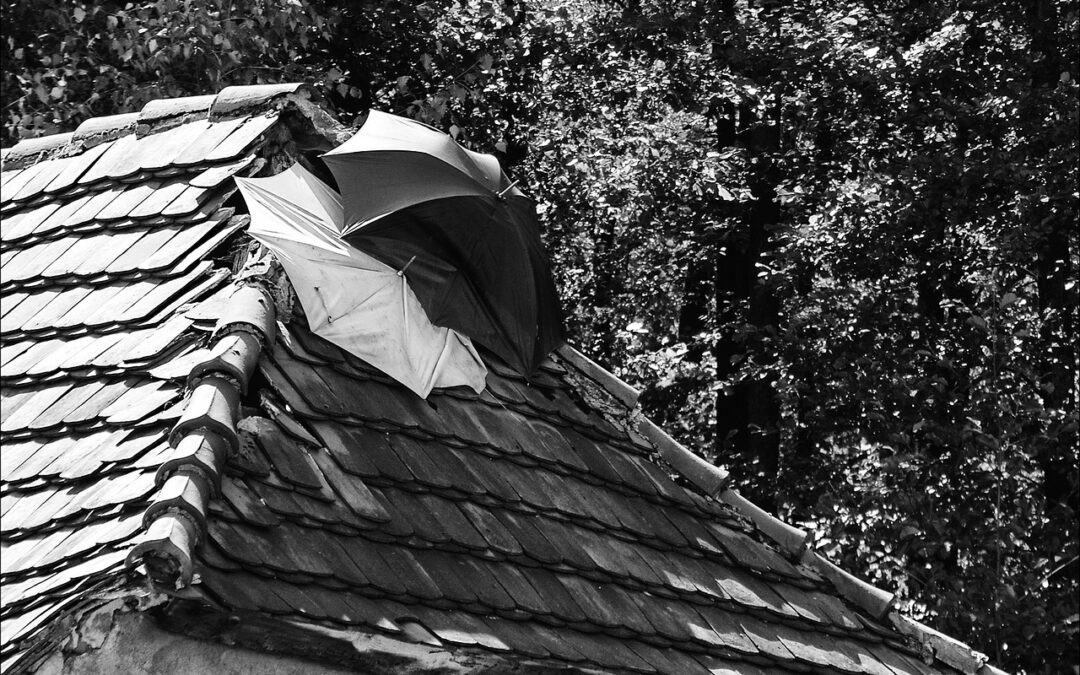If you’ve discovered that your roof is leaking, don’t worry. It may not be as bad as it seems, and you can fix it yourself using some basic hand tools and materials available at any home center or hardware store. You’ll also find the process fairly quick and inexpensive. Water can seep directly onto your shingles when a roof leaks or into the attic space below. The damage isn’t always visible, but it still needs to be addressed. If your roof is old and has weathered for years under the sun (a process referred to as “chalking”), you may find mismatched shingles in your attic. Let’s take a look at several ways how to patch a leaky shingle on your roof without:
1) Remove the source of the leak
The first thing to do is to identify and repair the source of the leak. Water can cause serious damage if left unchecked, so it’s a good idea to search out and repair any damaged shingles as soon as possible. If water has found its way into your attic, you’ll have to remove all wet insulation before you can make repairs. If damp insulation has been there for a long time, mold will be present, too. Moreover, wet insulation can lead to the growth of fungus that can stain and discolor your shingles. Use a garden hose to spray off the insulation, and make sure that you remove any water with a shop vacuum. It’s best to wait for a sunny day when you can leave the attic ventilated for at least a few hours.
2) Replace missing shingles
If your roof is weathered or has been damaged by wind or hail, you may find yourself having to replace some missing shingles. A damaged shingle is usually easy to spot. It will be discolored or have small holes or patches in the center. Remove the shingle above and inspect it if it’s under the eaves.
3) Use a flashlight to check for water stains
Inspect your roof carefully and look for telltale water stains, especially in hidden areas such as deck overhangs and along roof edges. You’ll find missing shingles in various spots if your roof has been spot-weathered. The water stains may be obvious such as a round discoloration or hole where a missing shingle would have been. Sometimes the stain will just be a dark shadow on the roof beneath, but if you shine a flashlight up into the valley, you’ll notice it.
4) Push out the missing shingle
When you find a suspect shingle, push it aside and inspect the area around it. If there’s a spot where water can seep through, it’s easy to see. To repair the broken shingle, use a hammer and chisel to pry up bits of debris or remove any underlying nails holding the broken shingles down.
5) Patch the hole with a shingle
If a shingle is missing, you’ll need to match it up with the right size and type. On older roofs, replacement shingles are typically available in long strips nailed on by a machine – called “zigzag” nailing. If the broken shingle is in a hidden area, or if it’s damaged, then use “shingle siding.” The siding is made of heavier stock and comes in wider, easy-to-match widths. Use the siding to fill in the area where the broken shingle was, but only if you’re sure it’s not damaged.
6) Make sure the replacement shingles are secure
Use nails or roofing cement to secure any new shingles. If you use nails, ensure they’re sized correctly (1 5/8 inch is typical). Hammer them down using a firm strike and pull them up to ensure they’re secure.
7) Clean the area above the new shingles
Clean any remaining debris from the roof with a broom and vacuum. If you notice any stains or discolored areas caused by water, use a power washer to scrub them away.
8) Securely fasten decking or fascia
If you’re replacing missing roofing material, secure decking, fascia, or other overhangs. Again, use nails or roofing cement to secure them in place. Cover these areas with tar paper to keep out future water problems.
9) Replace anything missing from under your eaves
If you see flagstones near your chimney, replace them immediately (they can absorb water and expand). If you have a metal roof, check your gutters to ensure they’re secure and functioning properly. Look for leaky flues on chimneys, flashing around skylights and vents, or other damaged home inspectors.
10) Fix damaged flashings
If the damage is relatively minor, you can patch the affected area with new flashing tape or foam. You can purchase flashing tape in different sizes from any hardware store or home center. Use only two inches of adhesive foam for heavy-duty applications such as large skylights to roofs, and make sure it’s fireproofed to 1/4 inch.
11) Use silicone or membrane roof coatings
Most modern roofing systems are now either silicone-based or membrane-coated. Both types of materials are made to withstand extreme temperatures and resist mold growth, insects, and mildew. If you’re working on a new roof or your existing roof is already coated, you may want to look into installing a new coating over it to provide additional protection. However, if water is allowed to pool underneath a roof, the coating may crack and peel away in large sections.
12) Clean and repaint your roof
If you’re not repairing a roof that has already been repaired, you need to ensure that it gets cleaned properly. If you hire a roofing contractor to upgrade your roof, they’ll take care of all the details. However, if you’re working on your own home, use a pressure washer to clean the shingles and gutters below (with the power turned off). Use a paintbrush or scrubber with the cleaner to remove any loose debris. A heat gun will work well with silicone coatings and membrane treatments. Then use a ladder to reach the highest parts of the roof without climbing onto a wooden decking.
13) Secure your roof
If you’re planning on using your roof for recreational purposes, such as gardening or lawn games (in which case you wouldn’t want to walk on a slippery surface), then use a layer of non-slip roof coating. The coating will protect shingles from sun damage and keep out tree sap and bird droppings. Have the manufacturer apply the coating directly for a long-term, fully-coated roof.
14) Inspect the repaired area
Roofs can develop problems quickly – if you don’t spot them and repair them immediately, and a small problem can quickly turn into a leak that causes more work later on. Take a final look at your repaired home to check that it doesn’t have any unsightly gaps or damaged areas. Inspect the shingles along your entire roof to ensure they’re all bonded securely and sealed tightly against leaking. If you notice any damage, call a contractor.
Conclusion
When it comes to getting the best of your money, purchasing a home is expensive. When you are able to take advantage of financing options that are available or one of many home improvement grants offered in most jurisdictions, the idea of being able to fix up your property becomes much more satisfying.

